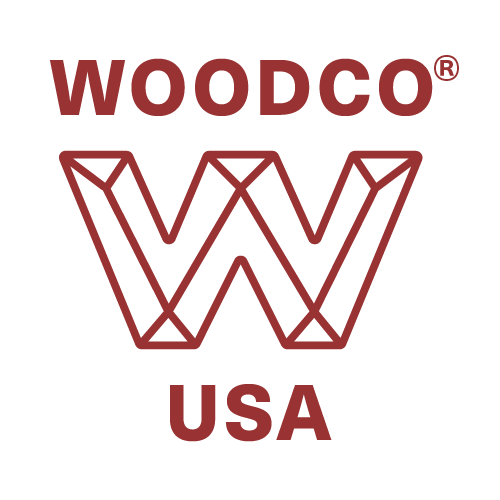Clamps
Inspection requires a thorough cleaning, removing all dirt, paint, rust, etc.
Inspection should include particular care to positively identify clamp halves, matching them as to manufacturer and individual serial number (WOODCO USA uniquely identifies each assembly with a manufacturing work order number followed by the item manufacturing sequence number e.g. WO 12345-01 on each half).
Perform a visual inspection for obvious handling damage, corrosion, cracks, and galls. The 25° ramp inside the clamp should not have gouges, or deep pits. It should feel smooth to the touch (after cleaning). Clamps that do not appear damaged do not require dimensional inspection. 1
Periodic inspection to meet a regulatory requirement for clamp (equipment) re-certification should also include:
- A Brinell Hardness test on each clamp half to confirm that some unrecorded repair has not altered the required original Mechanical Properties.
- A Magnetic Particle Inspection of the 2 body halves.
- A shop hydrotest to Test Pressure. (also see Test Pressure and Working Pressure Tests Explained)
Caution: If circumstances should require dimensional inspection, keep in mind that API publishes no specific dimensions for clamps, but supplies only design requirements with allowable stress levels. Clamps made by different manufacturers will not likely have identical critical dimensions. Measurement of these critical dimensions requires special tools and skills and only knowledgeable persons qualified to perform dimensional inspections on clamps should do so. Measuring clamp dimensions and comparing one manufacturer’s dimensions to those of another manufacturer will lead to false reports of non-conformance.
Evaluate bolts and nuts to the same criteria as used for flange bolting, and replace these parts if questionable. Replace any missing or damaged Spherical Washers.
Operators should store assembled, matched, clamp sets providing adequate protection from corrosion until next use.
Persons making any assembly of pressure control equipment should conduct a Pressure Test of the assembly, with a hold period before use.
Persons wishing to test loose Clamps to qualify them for later use on any Hub they will fit, should test them using Hubs that apply the highest load at test pressure.
Hub Connected Equipment
API 16A Hubs have ring grooves similar to, or exactly the same as, those ring grooves in API 6A flanges. Evaluating ring grooves in both Hubs and flanges involve the same practices.
For appraisal of used ring grooves to determine their suitability for use, see Field Appraisal of Ring Grooves on this website.
Caution: API 16A Hub connections differ from flanges in that the ring groove, face, Hub O.D., and Hub edge width, all must conform to the exact API specified dimensions and tolerances in order to seal and function reliably. Field measurements on all of these dimensions require special tools and skills, and only knowledgeable persons qualified to perform dimensional inspection on Hub connections should do so.
Hub ring grooves cannot have repair performed by skim cutting the Hub face and deepening the groove. Any groove rework beyond polishing must include weld repair to the Hub to provide stock for repair machining. If operators expect to connect and disconnect Hub connection equipment and store the equipment for any extended time, the operator would do well to specify corrosion resistant material inlay in the ring grooves at the time of original order.
If circumstances require weld repair to existing used Hub connected equipment, operators should consider adding corrosion resistant material inlay to the existing Hubs at the time of repair.
Beyond the ring grooves, API 16A specified Hubs should appear free of corrosion and pitting on the 25° backface ramps where Clamps must contact and slide to pull the connections together. The backface ramp should feel smooth to the touch (after cleaning). 1
Storage of Hub connected equipment should include protection of the entire Hub area from corrosion and handling damage.
Persons making any assembly of pressure control equipment should conduct a Pressure Test of the assembly, with a hold period before use.
Persons wishing to test assembled equipment, with or without internal closure mechanisms, should make their test consistent with the normative practices as shown in API Specs 6A and 16A. For pressure tables and information on equipment testing, click here.
For instructions for Installation of clamps on hubs, click here.
For inspection instructions on clamps manufactured before 1986, click here.
| 1 | Words in bold italic indicate they have subjective meaning and persons using this information must use experience to improve the reliability of their judgement when the meaning of these words can have impact on performance. |

